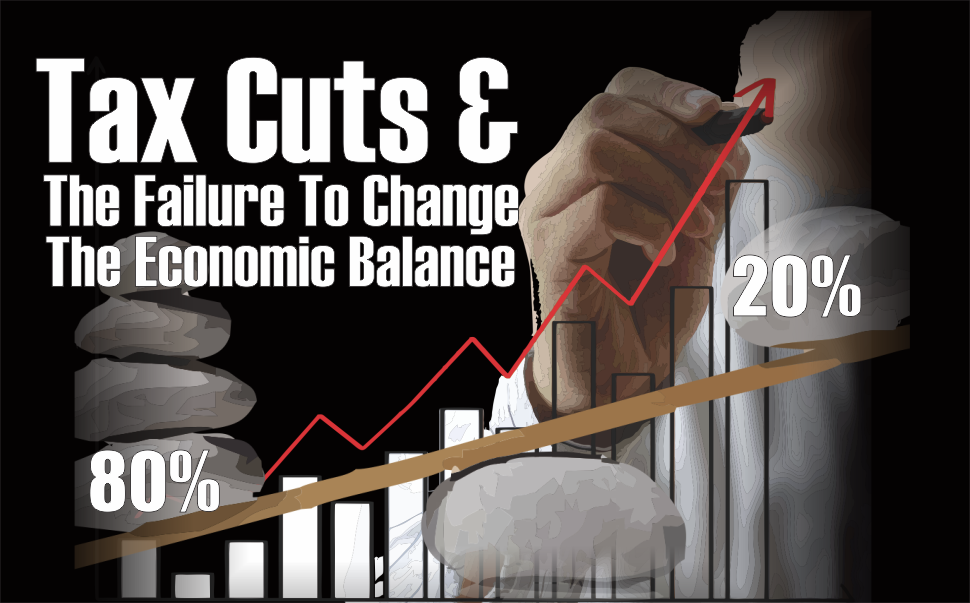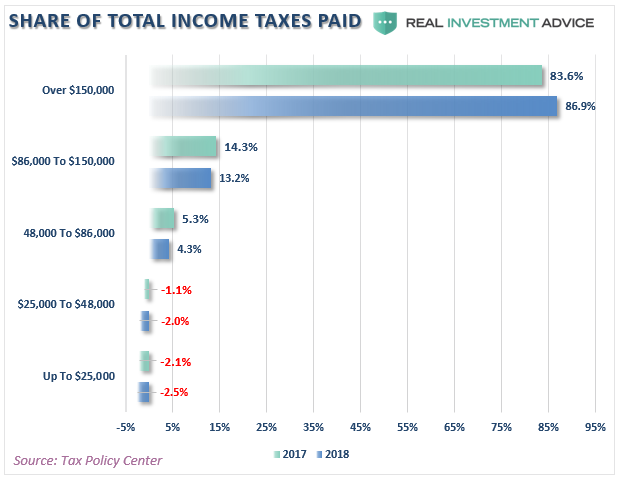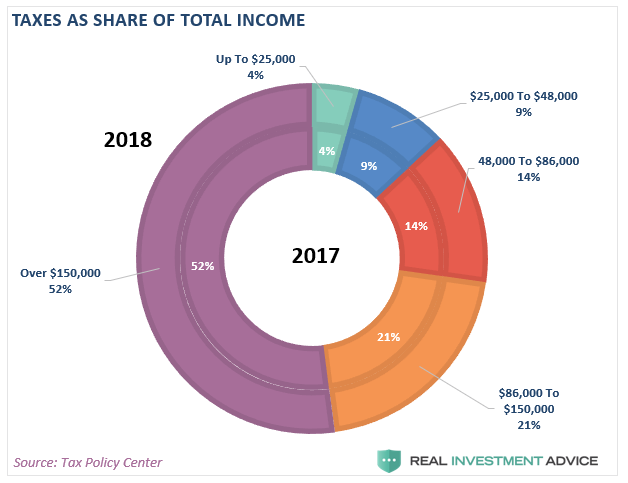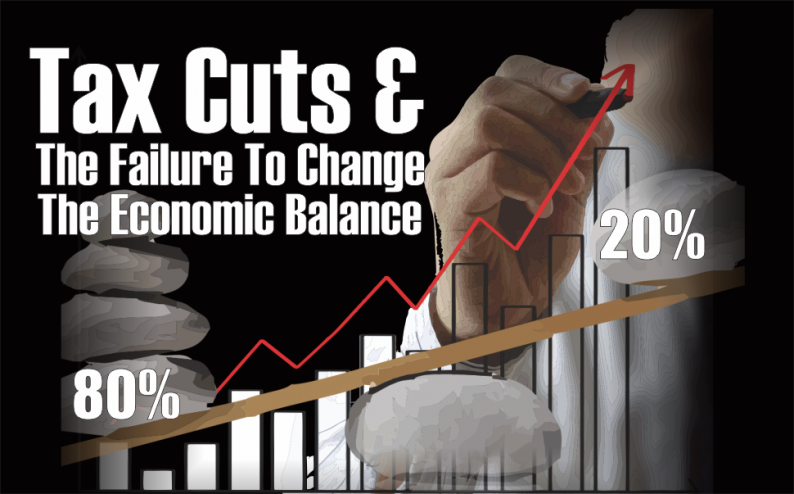
As we approach “tax day” in the U.S., I wanted to take a moment to revisit the issue of taxes, who pays what, and why the “Tax Cut and Jobs Act” will likely have limited impact on economic growth.
This week, Laura Saunders penned for the WSJ an analysis of “who pays what” under the U.S. progressive tax system. The data she used was from the Tax Policy center which divided about 175 million American households into five income tiers of roughly 65 million people each. This article was widely discussed on radio shows across the country as “clear evidence” recent tax reform was having a “huge effect” on average households and a clear step in “Making America Great Again.”
The reality, however, is far different than the politically driven spin.
First, the data.
“The results show how steeply progressive the U.S. income tax remains. For 2018, households in the top 20% will have income of about $150,000 or more and 52% of total income, about the same as in 2017. But they will pay about 87% of income taxes, up from about 84% last year.”

See, the “rich” are clearly paying more.
Not really, percentages are very deceiving. If the total amount of revenue being collected is reduced, the purpose of a tax cut, the top 20% can pay LESS in actual dollars, but MORE in terms of percentage. For example:
This is how “less” equals “more.”
So, where is the “less?”
“By contrast, the lower 60% of households, who have income up to about $86,000, receive about 27% of income. As a group, this tier will pay no net federal income tax in 2018 vs. 2% of it last year.”

“Roughly one million households in the top 1% will pay for 43% of income tax, up from 38% in 2017. These filers earn above about $730,000.”
While the “percentage or share” of the total will rise for the top 5%, the total amount of taxes estimated to be collected will fall by more than $1 Trillion for 2018. As Roberton Williams, an income-tax specialist with the Tax Policy Center, noted while the share of taxes paid by the top 5% will rise, the people in the top 5% were the largest beneficiaries of the overhaul’s tax cut, both in dollars and percentages.
Not surprisingly, as I noted previously, income taxes for the bottom 2-tiers of income earners, or roughly 77-million households, will have a negative income tax rate. Why? Because, despite the fact they pay ZERO in income taxes, Congress has chosen to funnel benefits for lower earners through the income tax rather than other channels such as federal programs. Since the recent tax legislation nearly doubled the standard deduction and expanded tax credits, it further lowered the share of income tax for people in those tiers.
The 80/20 Rule














Leave A Comment